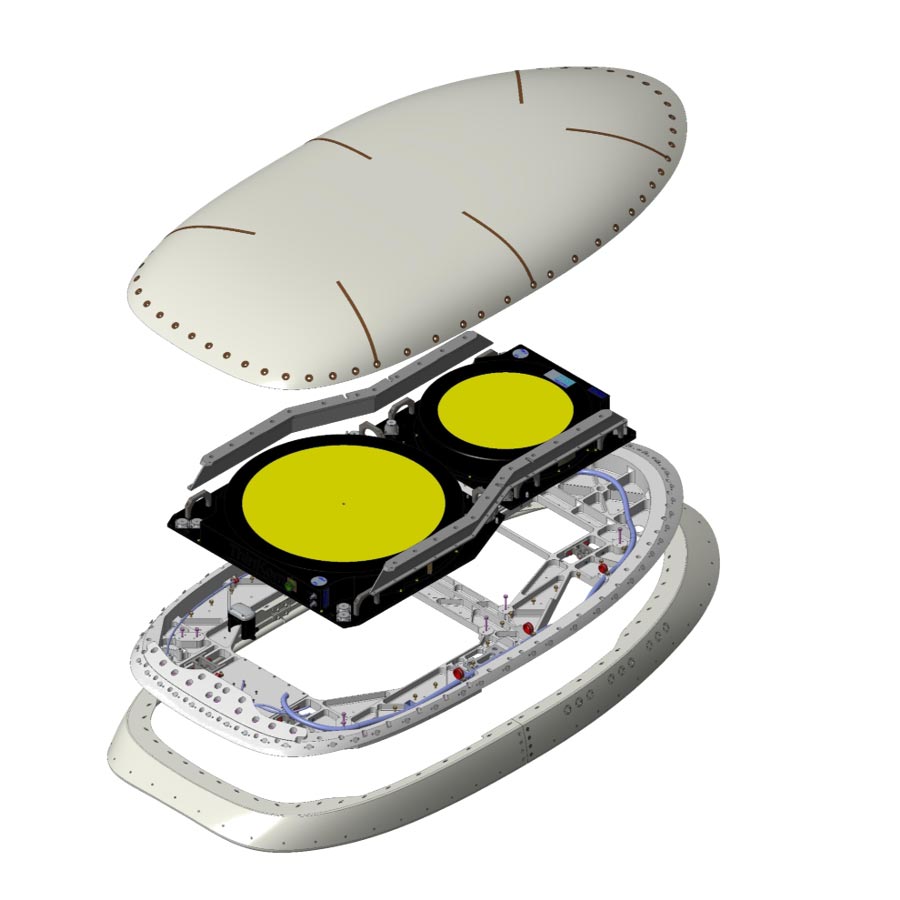The ThinKom ThinAir Ka2517 phased-array antenna system has been selected by Leidos for the US Army’s new Special Mission Aircraft.
~
Press Release, Hawthorne, 15 November 2021: ThinKom Solutions, Inc. has delivered its ThinAir Ka2517 phased-array antenna system to Leidos for installation on its new high-accuracy electronic intelligence aircraft for the US Army.
Leidos designed and developed the demonstrator Special Mission Aircraft (LSMA) using a commercial off-the-shelf (COTS) Bombardier Challenger 650 jet. The aircraft has been modified to carry a sophisticated suite of electronics enabling extended electronic sensing deep into the threat environment to deliver long-range precision surveillance while remaining outside the range of hostile air defence systems. It has the speed and endurance to get quickly to a hot spot and remain on station for long periods of time.
The ThinKom Ka2517 low-profile Ka-band aero satellite antenna system, which is being integrated with a US military-compliant modem, provides real-time, reliable and resilient broadband transmission to and from the aircraft in flight. The phased-array antenna has the agility to interoperate seamlessly with satellites in geostationary (GEO) and non-geostationary (NGSO) orbits, ensuring worldwide connectivity. The low-profile radome minimises in-flight drag, resulting in lower fuel consumption and longer time on station, without refuelling.
The Ka2517 is based on ThinKom’s field-proven patented VICTS (Variable Inclination Continuous Transverse Stub) phased-array technology. VICTS antennas have an unparalleled record of reliability with installations on over 1,600 commercial aircraft with over 24 million hours of accrued flight time and a mean-time-between-failure (MTBF) in excess of 100,000 hours. Ka2517 antennas have been providing continuous service on other US government aircraft since 2018.
“ThinKom’s VICTS antennas meet or exceed the performance requirements for the LSMA airborne missions,” said Bill Milroy, Chairman and CTO of ThinKom. “The open architecture system provides robust, reliable and resilient command, control and communications capabilities, operating across multiple satellites and constellations and using multiple waveforms, including those enabling specialised crypto capabilities. The antennas have extremely well-behaved sidelobes and pattern characteristics that support robust Low Probability of Intercept (LPI) and Low Probability of Detection (LPD).”
“The satellite antenna on the LSMA platform is an important enabling technology,” said Leidos Vice President for Airborne Solutions Matthew Pfrommer. “We selected the ThinKom Ka2517 design because of its proven reliability, ensuring uninterrupted, high-bandwidth, mission-critical connectivity under the most extreme conditions.”
The LSMA, outfitted with the ThinKom phased array, will undergo in-flight testing in early 2022.
~





















